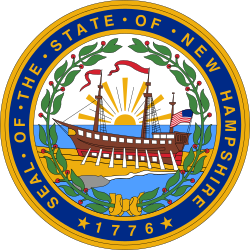| |||||||||||||||||||||||||||||||||||||
| |||||||||||||||||||||||||||||||||||||
| |||||||||||||||||||||||||||||||||||||
| Elections in New Hampshire |
|---|
 |
The 1785 New Hampshire gubernatorial election was held on March 8, 1785, in order to elect the President of New Hampshire. (The office would be renamed to Governor in 1792.) Candidates consisted of John Langdon, George Atkinson, John Sullivan and Josiah Bartlett. Since no candidate received a majority in the popular vote, Langdon was elected by the New Hampshire General Court per the state constitution, despite having come in second in the popular vote. [1]



